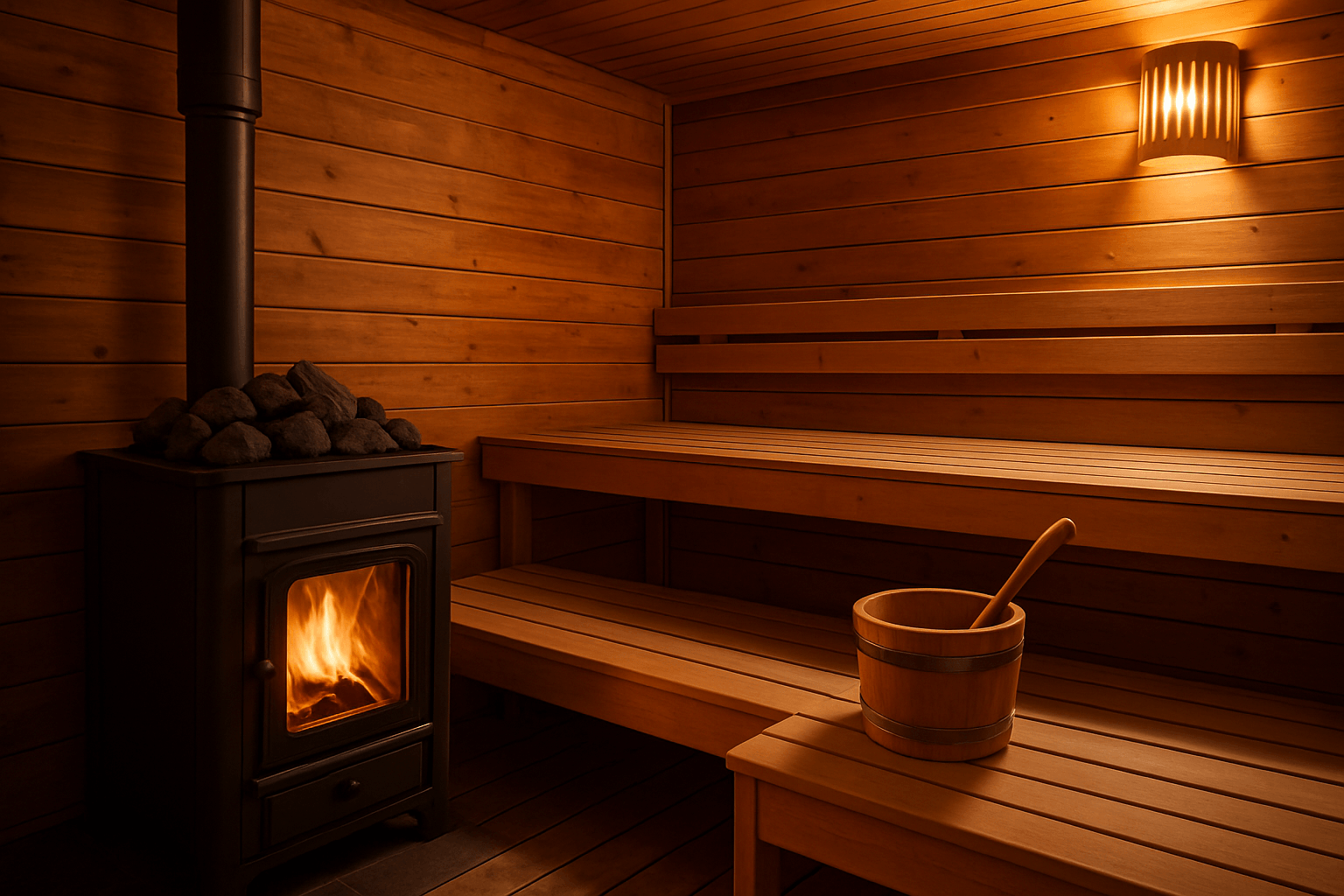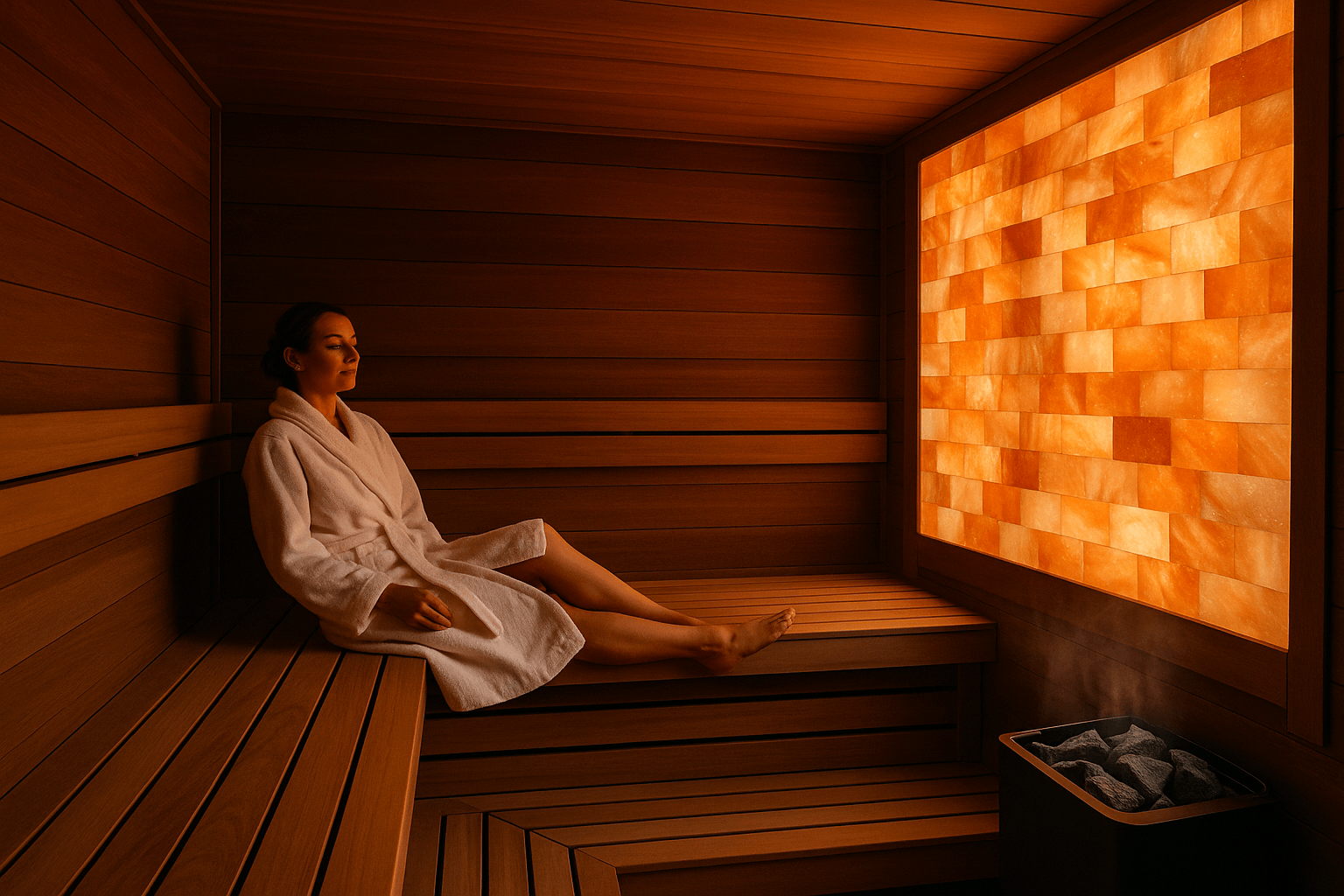Can a Sauna Help Sinus Infections? How Heat and Steam Support Relief
If you're dealing with a stubborn sinus infection, you know the frustration: relentless congestion, throbbing pressure behind your eyes, and that heavy feeling that just won't quit. You've probably cycled through nasal sprays, decongestants, and maybe even antibiotics, yet relief feels out of reach.
Here's something you might not have considered: stepping into a warm sauna could offer the natural relief you've been searching for. But does heat therapy actually help sinus infections, or is it just wishful thinking?
The answer is encouraging. When used properly, saunas can be a powerful complementary tool for managing sinus congestion, reducing inflammation, and supporting your body's natural healing process. Let's explore what the science says, which sauna types work best, and how to use them safely when you're under the weather.
Understanding How Saunas Impact Your Body
Before we dive into sinus-specific benefits, it helps to understand what happens when you step into a sauna:
Heat exposure raises your core body temperature, triggering vasodilation—the expansion of blood vessels that improves circulation throughout your body. This enhanced blood flow means immune cells and nutrients reach affected areas more efficiently.
Sweating is your body's natural cooling mechanism, but it also helps eliminate toxins and supports overall detoxification.
Humid environments (in steam saunas) moisturize your nasal passages directly, helping to thin and loosen stubborn mucus that's blocking your sinuses.
These combined effects create an environment that can genuinely support sinus relief and recovery.
What the Research Says About Saunas and Sinus Health
The scientific community has been studying heat and humidity therapy for sinus relief, and the results are promising:
A systematic review published in Frontiers in Allergy found that humidified inhalation therapies, including sauna use, may temporarily improve acute rhinosinusitis symptoms by promoting mucociliary clearance—your body's natural mechanism for clearing nasal congestion and thinning mucus.
Even more compelling, a randomized controlled trial in the International Forum of Allergy & Rhinology showed that patients with chronic rhinosinusitis experienced significant short-term relief after 20-minute humid steam sauna sessions. Participants reported noticeably less pressure and improved breathing compared to those in dry air or no intervention groups.
Research into immune function adds another layer of benefit. A meta-analysis in Evidence-Based Complementary and Alternative Medicine found that regular sauna bathing was associated with reduced frequency of upper respiratory tract infections. The study suggested that thermal therapy may enhance immune system markers like white blood cell count, creating a mild hyperthermic response that temporarily supports your body's ability to fight infections.
Important caveat: Saunas aren't a replacement for medical treatment, especially if you're dealing with a bacterial infection or running a fever. They're best used as a complementary therapy alongside—not instead of—your doctor's recommendations.
How Saunas Support Sinus Relief
Here's what makes sauna therapy particularly helpful for sinus issues:
Mucus loosening: Heat and steam work together to break down thick, stubborn mucus, making it easier for your sinuses to drain naturally. This is especially true in humid environments where moisture directly reaches your nasal passages.
Inflammation reduction: Improved blood circulation helps reduce swelling around your sinus cavities, which can decrease that feeling of pressure and pain.
Immune support: Better circulation means your immune cells can reach infected or inflamed areas more effectively, supporting your body's natural defense mechanisms.
Nasal passage opening: The warmth temporarily dilates your nasal airways, allowing you to breathe more easily during and after your session.
Stress relief: Chronic stress suppresses immune function. The deep relaxation that comes with sauna use helps your body redirect energy toward healing rather than stress response.

Scientific Evidence: What Studies Say About Sauna Use and Sinus Health
🔍 A 2018 clinical study published in the American Journal of Rhinology & Allergy found that humidity and controlled heat therapy can improve mucociliary clearance — your body's natural ability to clear nasal congestion.
🔍 Another 2019 study in Medical Hypotheses noted that thermal therapies like sauna bathing may enhance immune system activity by improving circulation, creating a temporary “artificial fever” effect, and potentially helping your body fight infections more effectively.
While research is still emerging, early results suggest moderate sauna use may relieve sinus-related symptoms — especially when congestion is caused by inflammation rather than bacterial infection.
Important: Saunas aren’t a replacement for medical treatment, especially if you have a serious bacterial infection or fever. They are a complementary therapy to help ease symptoms.
Choosing the Right Sauna Type for Sinus Relief
Not all saunas deliver the same benefits when you're battling sinus congestion. Here's how different types stack up:
Traditional Steam Sauna: These high-humidity environments excel at moistening nasal passages and loosening thick mucus. The steam directly hydrates dry, inflamed tissues. However, the higher temperatures (typically 150–190°F) might feel overwhelming if you're already feeling weak or fatigued.
Infrared Sauna: These use gentle heat that penetrates deeper into tissues, making them excellent for boosting circulation and reducing inflammation without intense heat exposure. The downside? Lower humidity means less direct mucus-loosening effect unless you stay well-hydrated. Discover options that combine deep-tissue benefits with comfortable heat at our infrared sauna collection.
Full-Spectrum Sauna: Combining near, mid, and far-infrared wavelengths, these offer comprehensive benefits—circulation enhancement, inflammation reduction, and overall wellness support. They're ideal for recovery and ongoing maintenance, though they represent a newer technology that comes at a higher price point.
Hybrid Sauna: These innovative designs combine traditional steam with infrared technology, giving you the best of both worlds—moisture for immediate relief and deep-penetrating heat for inflammation. If you're serious about sinus relief, check out our hybrid sauna options that deliver maximum therapeutic benefit.
Safe Sauna Practices When You Have a Sinus Infection
Following these guidelines ensures you get relief without risking your health:
Hydrate aggressively: Drink plenty of water before, during, and after your session. Dehydration can worsen congestion and make you feel worse overall.
Keep sessions short: Limit yourself to 15–25 minutes, especially when you're not feeling well. Your body is already working hard to fight infection—don't overtax it.
Listen to your body: If you feel dizzy, nauseous, or notice your symptoms worsening, exit immediately. Your sauna will be there when you're feeling better.
Never sauna with a fever: If your temperature is elevated, skip the sauna entirely. Adding external heat when you already have a fever can be dangerous and may worsen your condition.
Try aromatherapy carefully: Some people find relief by adding eucalyptus or peppermint oil to steam rooms (only if your sauna is designed for safe essential oil use). These oils may offer mild decongestant effects, though evidence for their effectiveness is still limited.
Start gradually: If you're new to sauna use, begin with shorter sessions at lower temperatures and work your way up as your body adapts.
When to Avoid Saunas Entirely
While saunas offer many benefits, there are times when you should absolutely avoid them:
- You have an active fever
- You're severely dehydrated
- You have acute respiratory distress
- You feel extremely weak or dizzy
- Your doctor has advised against heat exposure
- You have certain cardiovascular conditions
Always consult with your healthcare provider if you're unsure whether sauna use is appropriate for your situation.
Maximizing Your Saunas Benefits
To get the most out of your sauna sessions for sinus relief:
Timing matters: Use your sauna 2-3 times per week during acute symptoms, spacing sessions at least a day apart to avoid overexertion.
Pair with other treatments: Combine sauna use with prescribed medications, proper rest, and good nutrition for comprehensive symptom management.
Create the right environment: If you're installing a home sauna specifically for health benefits, consider placement, size, and features that support therapeutic use. Browse our complete collection at Infinite Sauna to find the perfect fit for your wellness goals.
Follow up properly: After your session, continue hydrating, rest comfortably, and use a humidifier in your bedroom if congestion returns.
Frequently Asked Questions
Does sauna heat kill sinus infection bacteria?
No, sauna heat doesn't directly kill bacteria causing your infection. However, it supports your body's natural immune response by improving circulation and creating a mild hyperthermic effect that may help your immune system work more effectively. Bacterial infections require appropriate medical treatment—saunas are a supportive therapy, not a cure.
What's better for sinus relief: a steam room or sauna?
For immediate mucus relief, traditional steam rooms typically offer more benefit due to their high humidity. However, infrared saunas provide superior inflammation reduction and circulation benefits. Hybrid saunas that combine both approaches often deliver the most comprehensive relief.
How long should I stay in a sauna for sinus relief?
Most research suggests 15–25 minutes provides optimal benefits without overtaxing your body. When you're fighting an infection, shorter sessions (15–20 minutes) are safer and still effective. Always prioritize how you feel over hitting a specific time target.
Can infrared saunas relieve sinus pressure?
Yes, infrared saunas can help reduce sinus pressure by improving circulation and reducing inflammation around sinus cavities. While they don't provide the direct moisture of steam saunas, the deep-penetrating heat offers significant anti-inflammatory benefits that many people find helpful for pressure relief.
Should I use a sauna if I have a fever?
Absolutely not. Using a sauna with an active fever can be dangerous, potentially causing dehydration, overheating, and worsening your condition. Wait until your fever has resolved completely before resuming sauna sessions.
Can children with sinus infections use saunas safely?
Children can use saunas, but with extra caution. Keep temperatures lower, sessions shorter (5–10 minutes), and supervise constantly. Children dehydrate more quickly than adults. Always consult your pediatrician before introducing sauna therapy for children with sinus infections.
Are essential oils safe to use in every sauna?
No, not all saunas are designed for essential oil use. Traditional steam saunas may safely accommodate certain oils, but infrared saunas typically should not have oils applied directly to heating elements or wood surfaces. Always check your manufacturer's guidelines before using any aromatherapy products.
How often should I use a sauna for sinus issues?
During acute symptoms, 2–3 sessions per week provides the best balance of benefit and safety. Once symptoms improve, you can maintain regular sauna use for ongoing respiratory and immune health. Spacing sessions at least a day apart prevents overexertion.
Can sauna use replace antibiotics or nasal steroids?
No, saunas cannot replace prescribed medications. If your doctor has prescribed antibiotics for a bacterial infection or steroids for severe inflammation, complete the full course of treatment. Use saunas as a complementary therapy to support comfort and healing, not as a medical substitute.
The Bottom Line on Saunas and Sinus Relief
While saunas aren't a magic cure for sinus infections, the evidence supports their use as a valuable complementary therapy. The combination of heat, humidity (in steam models), improved circulation, and stress reduction creates an environment that supports natural healing and provides genuine symptom relief.
The key is using your sauna thoughtfully—staying hydrated, limiting session time, listening to your body, and continuing any treatments your healthcare provider has recommended. When used correctly, a sauna session can transform your recovery experience from miserable to manageable.
Ready to breathe easier? Your next relief session might be waiting in the comforting warmth of a quality sauna designed specifically for therapeutic benefits.
Medical Disclaimer: This article is for informational purposes only and is not intended as medical advice. Always consult with a qualified healthcare provider before starting any new health practice, especially if you have existing medical conditions or are currently treating an infection.










Leave a comment
This site is protected by hCaptcha and the hCaptcha Privacy Policy and Terms of Service apply.